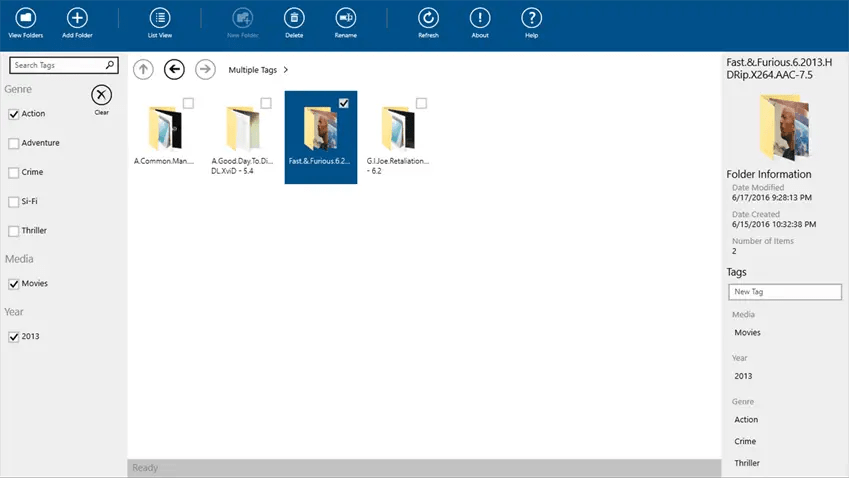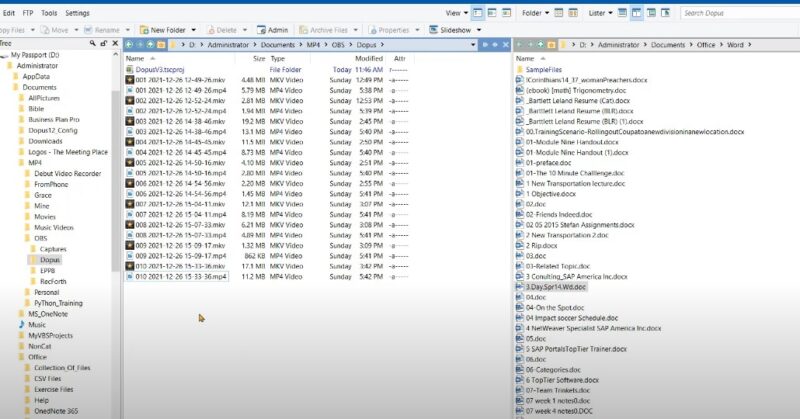Do you want to spend much time on your Windows PC sifting via folders and subfolders to find particular files? Do you yearn for an easier approach to quickly organize and locate your documents, pictures, and other files? Tags provide your file system with another layer to assist you in making sense of the confusion.
Tags are frequently used in note-taking systems but less frequently in file management systems. Organize your files according to your requirements by combining tags and folders. You will learn about the transformative potential of tags in Windows file organizing in this beginner’s guide. Using the tagging feature, you may take charge of your digital clutter and design a streamlined, effective file system that meets your demands.
The Concept Of Tagging
Tagging makes managing our digital assets easier and more effective. Visit this site to access this groundbreaking idea in file organizing. With the best tagging tool, you can give files meaningful labels, or tags, as opposed to typical folder structures that rely on a hierarchical system of directories. These tags serve as metadata, giving important details regarding the contents and features of each file.
Difference Between Folders And Tagging

Tagging differs from folders in that it is flexible and adaptable. Unlike tags, which can be applied to files wherever they are physically located, folders do not require files to be kept in a specific area. As a result, it will be simpler to categorize and locate documents, photographs, and other items using various criteria when a file has several tags attached to it. A project report file might be marked with “Quarterly Reports,” “Project X,” and “Financials,” for instance. It provides various entry points for discovering the file.
Benefits Of Tagging
There are several advantages and benefits to employing tags for file management. First, tags provide a more streamlined organizing system tailored to users’ preferences and work processes. They offer a more organic and adaptable method of file classification, doing away with the necessity for fixed folder structures. Tags also improve searchability by providing quick, accurate searches based on predetermined criteria. Thanks to tags, you can quickly find files using tags, keywords, or a mix of the two.
Also, tags make cross-referencing and organizing content from various themes, projects, or subjects easier. They eliminate the restrictions associated with putting all your files in one folder and enable dynamic retrieval and grouping of your files based on several dimensions. Users can design their distinctive file systems tailored to their particular demands and workflows because of the flexibility and adaptability of the system.

Windows file management and organization have been revolutionized by tags, which offer a flexible and strong tool for effective file management.
Types Of Tags
System and user-defined tags are the two main categories used in Windows file organizing. System tags, which the operating system has pre-defined, offer simple classification possibilities like “Pictures,” “Documents,” or “Music.” On the contrary hand, user-defined tags enable a more specialized and individualized categorization method. The user can generate these tags, giving the tagging system flexibility to be tailored to specific requirements.
Variety Of Uses
Tags have a variety of uses in the Windows file-organizing system. They serve as descriptive labels first, giving important details about the contents and features of a file. A presentation on marketing tactics, for instance, may be tagged with pertinent keywords like “strategy,” “marketing,” and “presentation.”
Customized Organization
Second, tags allow for customizable file arrangement and categorization. Unlike conventional folder architectures, Tags enable simultaneous association of files with many categories. As a result, a file can have tags for both “Sales Reports,” and “Project A,” enabling cross-referencing and convenient retrieval.
Searchability
And last, tags improve searchability. Tags can be utilized as search criteria while looking for a certain file, making it simpler to find files that match a particular tag or set of tags. This optimized search procedure reduces time spent searching and boosts output.
Tags And File Properties Integration

Additionally, tags and file characteristics can be integrated, which improves organization even more. Other requirements for categorizing files include author, creation date, and file type. This integration makes it possible to organize files more thoroughly and precisely.
Adjust And Personalize
Windows gives customers the option to personalize and adjust their tag system. Users can make tags, classify them, and even give them colors to help them stand out visually. This personalization makes file management more simple and individualized by ensuring that the tagging system corresponds with unique preferences and workflows.
Individual File Tagging
It entails investigating techniques for individually tagging files and applying suitable tags to various file formats. To make searching simpler, you must successfully use descriptive keywords.
Using Bulk Tags
It includes accelerating the simultaneous tagging of many files. It assists in utilizing keyboard shortcuts plus commands for effective bulk tagging. Find out how to tag in bulk while preserving consistency.
Optimizing Your Tags
To guarantee correctness and relevance, it also involves revising and improving tags. Whenever necessary, it also involves renaming and eliminating tags. The potential of tags is also maximized by ongoing development.
Using Tags To Search And Navigate
It facilitates using the Windows search functionality to find tagged files. For accurate results, it integrates tags with additional search criteria. Saving searches makes it easier to retrieve frequently used files quickly.
Manage Files With Virtual Folders

Using virtual folders to manage files according to tags is made easier by creating tag-based virtual folders. By allowing access to files from many locations without duplicating them, tagging maximizes the ease and adaptability of virtual folders.
Tagging Automation Using Rules
Establishing rules to allocate tags following file attributes is made easier by tagging. With clever automation, it also simplifies file organizing.
Including Tags In Applications Created By Third Parties
The power of tagging can be extended to other applications and productivity tools with the help of tagging. Through labeled files, it also improves collaboration and workflow synchronization.
Conclusion
You have now started a quest to master the skill of using Windows’ amazing tagging feature to organize files. You’ll notice a considerable decrease in time spent looking for files and an increase in productivity by implementing an effective tagging system. Making your digital life more streamlined, effective, and pleasurable by embracing the power of tags and using cutting-edge strategies. A streamlined and individualized filing system will replace the jumble of disorganized paperwork. Prepare to transform the way you use Windows to handle your files!

